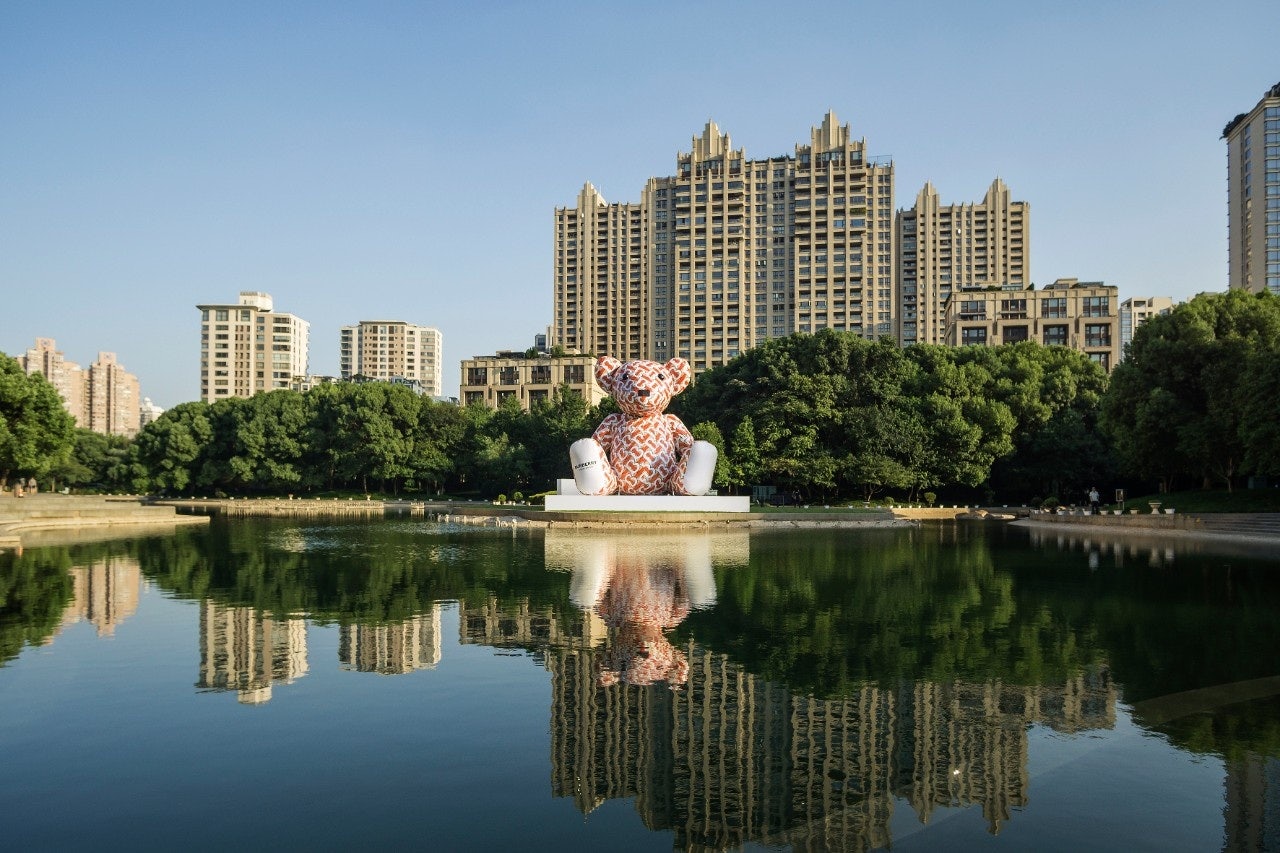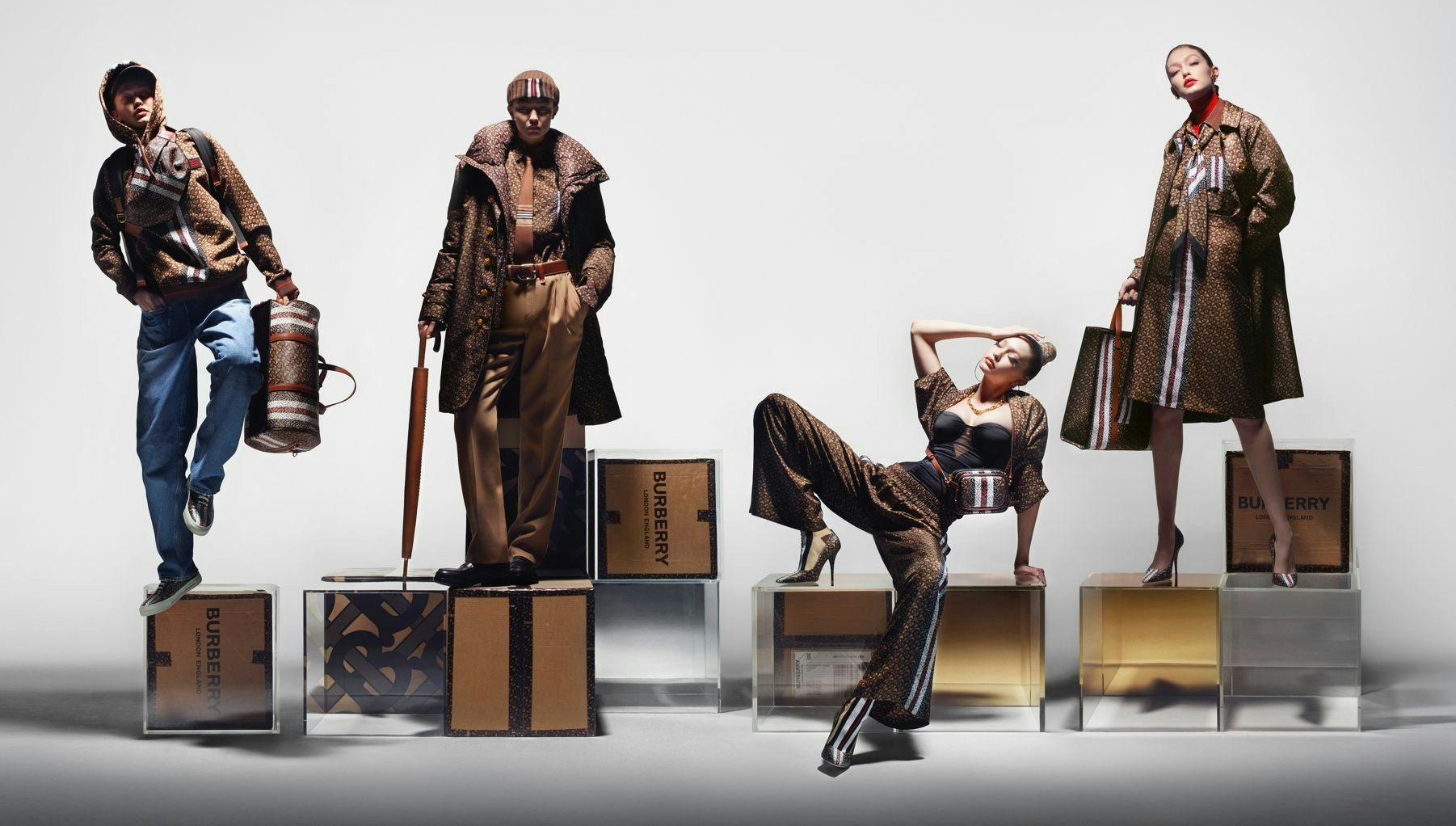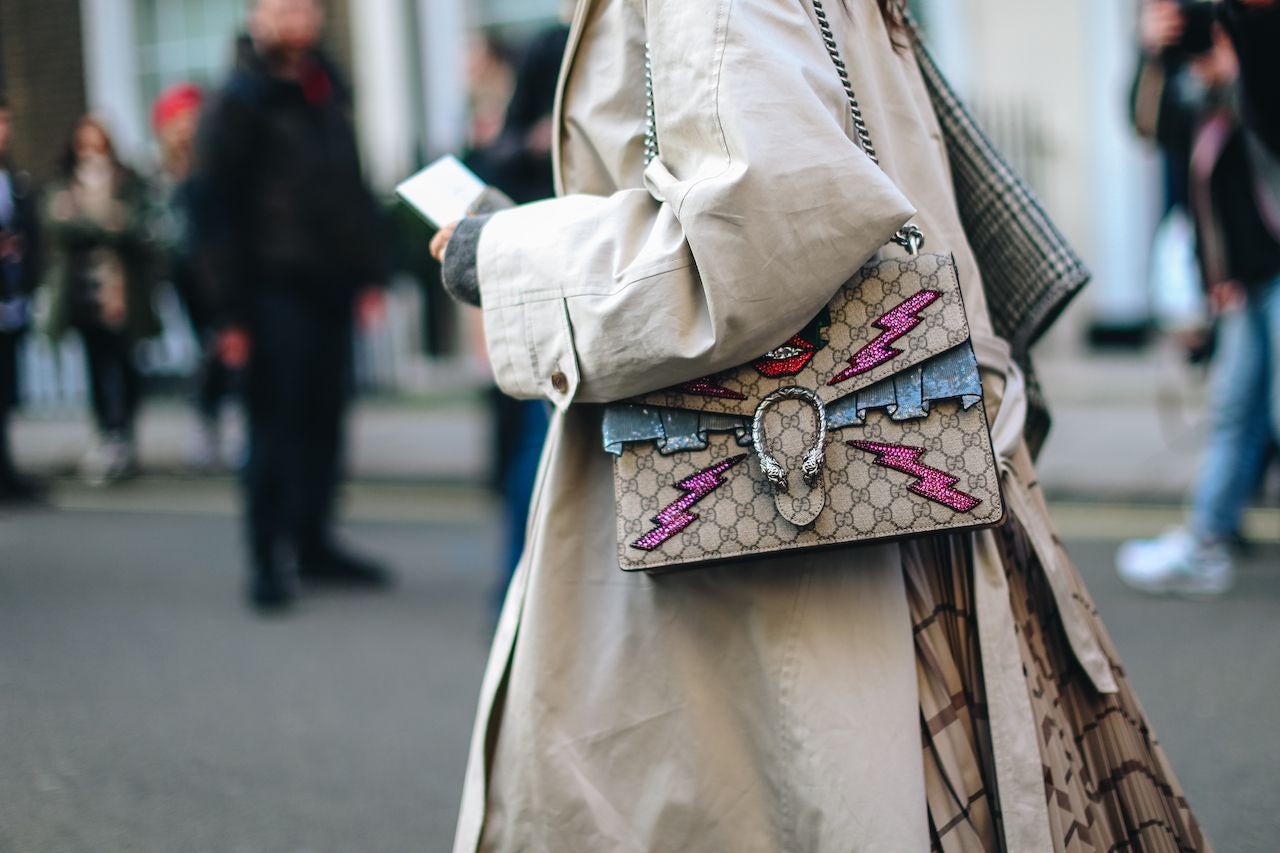With a new graphic identity, logo-rich products, and loads of investment in areas of retail distribution and marketing & communications, Burberry’s rebranding efforts are gradually rolling out under the leadership of creative director Riccardo Tisci, who came on board in March 2018. The transformation is now showing signs of rising popularity among Chinese consumers — the world’s most important luxury shoppers set to account for over 40 percent of global luxury goods consumption by 2023.
According to the British fashion house’s first-quarter FY 2020 earnings result, it scored a four-percent like-for-like (LFL) sales in the three months to June 29, which doubled markets expectations. Meanwhile, Tisci’s new collection, accounting for roughly 50 percent of the brand’s total offering at the end of this June (up from 10 to 15 percent in March), continued to record strong double-digit growth. Of particular note, the mainland China market saw sales grow 15 percent from the prior year, becoming the only source market that recorded double-digit growth.

In a nutshell, the latest earnings release indicates Chinese customers are falling in love with Tisci’s new Burberry. Zhang Chen, a 22-year-old male Chinese consumer told Jing Daily that he has started to notice the change at Burberry since last year when the brand set up a monogram-stripped giant Thomas Burberry Bear on the Xintiandi Taiping Lake in Shanghai. “That [installation] left a deep impression on me, which made me feel curious about this old brand, which I thought was for my parents’ generation,” he said. Today, Zhang owns a “Thomas Burberry Monogram” t-shirt (priced at 400), which happened to be the first item Tisci designed for the brand. He said he is also considering buying the brand’s “Monogram Strip E-canvas” bum bag (priced at 690), which he felt was “kind of cool.”
The importance of Burberry’s handbag and accessory category is also rising, which is very important for a luxury brand to win in the Chinese market, as consumers are very into “It” bags. Burberry’s TB handbag collection is gaining an increasing amount of attention from shoppers lately, according to Rita He, a veteran daigou agent who specializes in serving the country’s upper-middle-class buyers. “The runway TB bags are in demand by my clients, for example, and lately, the canvas tote bags are also popular,” He said. However, He was uncertain if TB bags could be considered as “It” bags, “because its desirability is still way behind some trending models including Louis Vuitton’s trunk bag, Chanel’s Gabrielle cross-body bag, and Dior’s saddle bag.”
Aside from product innovation, Burberry also devotes a significant amount of resources to communicate its transformation. In China, the brand is experimenting with the “drop” retail model on WeChat — learning from the commercial success of streetwear brands such as Supreme — to stir excitement and desirability. Burberry has also relocated and renovated some retail stores in major Chinese cities to ensure its store offerings are in line with the brand’s new DNA.
While Burberry seems to be on the right track to having a business turnaround, the question remains to be whether the current upward trend can be sustained in a tough business environment in which Brexit, the trade war, and the slowing Chinese economy are adding a various level of uncertainties.
Citi Research, in an investor note published on July 12, described Burberry as a bag full of high hopes. “We think the company will deliver stronger growth in the second half of the year given improvement in new product availability.” The brand plans to grow the offerings of Tisci’s new collection out of total share to around 60 percent by September and around 75 percent by fiscal year-end 2020. JP Morgan, however, shows more caution than optimism quite simply because of its timing, “The cycle is becoming tougher and we have never seen turnarounds succeed in adverse cycles. Plus, Burberry is highly exposed to the Sterling volatility around Brexit.”
Even Burberry itself is cautious on the outlook. The pick-up of Q1 LFL sales did not give the brand enough confidence to lift its full-year projections. What’s more important, Tisci is yet to prove that his design can have the halo effect to leather goods and across categories like what Alessandro Michele has brought to Gucci to truly underpin the brand’s turnaround.

